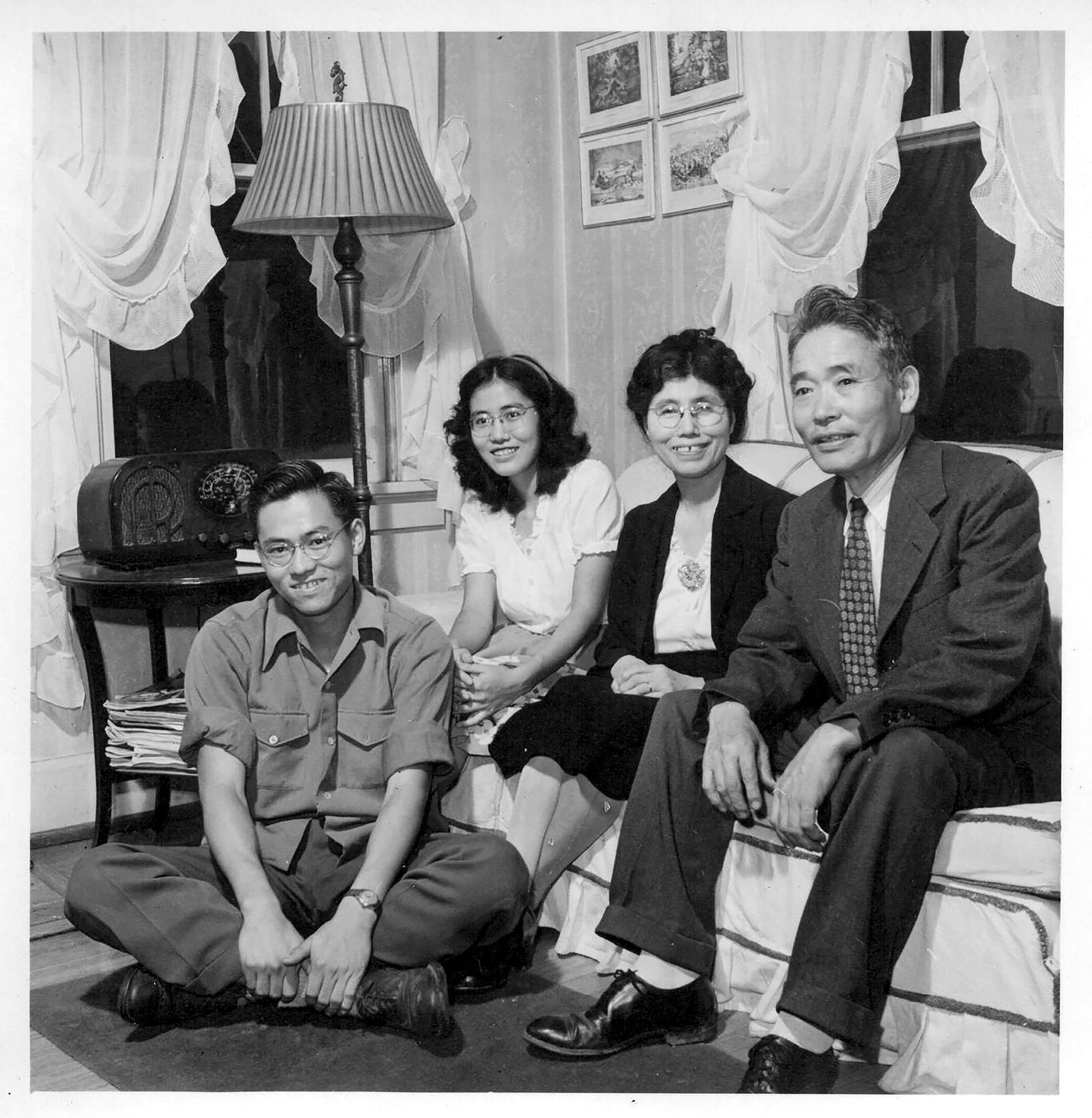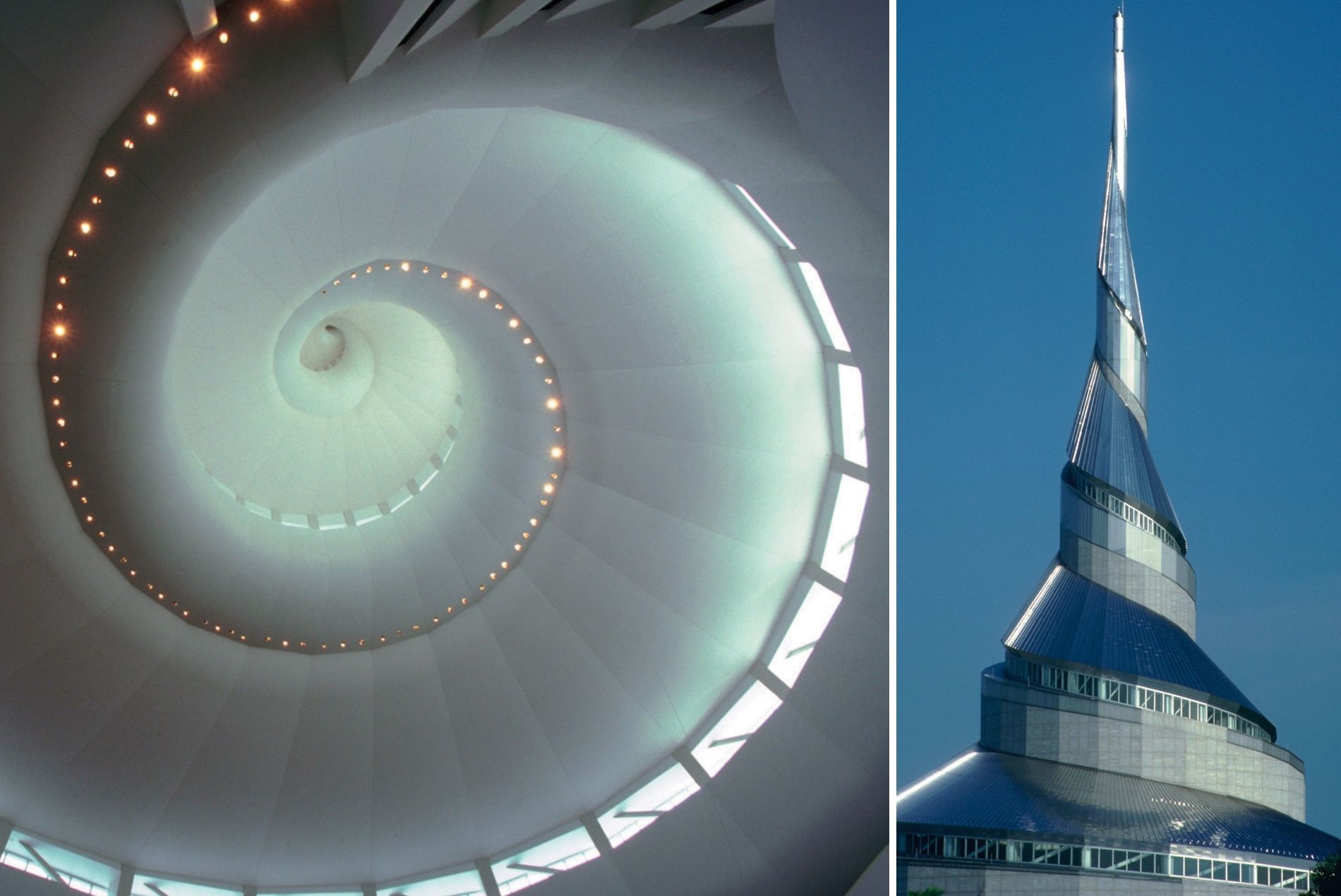Gyo Obata, FAIA, architect and Founding Partner of HOK, passed away on March 8. He was 99.
Obata, in partnership with George F. Hellmuth and George Kassabaum, built HOK from a regional, St. Louis-based architectural practice into a global design, architecture, engineering, and planning firm.
His career spanned six decades and included numerous iconic projects, including:
- Priory Chapel at Saint Louis Abbey, Creve Coeur, Mo. (1962)
- The Galleria in Houston (1970)
- Dallas/Fort Worth International Airport (1973)
- Bristol-Myers Squibb Campus, Princeton, N.J.(1973)
- National Air and Space Museum in Washington, D.C. (1976)
- King Khalid International Airport in Riyadh, Saudi Arabia (1983)
- King Saud University in Riyadh (1984)
- Community of Christ Temple, Independence, Mo. (1994)
- Japanese American National Museum Pavilion in Los Angeles (1998)
Statement from HOK:
Gyo was one of three principals who built HOK from a regional, St. Louis-based architectural practice into one of the world’s most respected global design, architecture, engineering and planning firms. His distinguished career spanned six decades. From the time of his retirement in 2012 and continuing into 2018, Gyo maintained an office in HOK’s St. Louis studio, where he regularly served as a design advisor to his colleagues.
“Gyo’s extraordinary career at HOK continued into his 90s, and he served as a mentor to several generations of designers including myself,” said HOK Chairman and CEO Bill Hellmuth, FAIA. “As an example to all of us, he led HOK to become the largest architecture-engineering firm in the United States while never abdicating his role as a designer of significant projects.”
Underpinning Gyo’s pioneering design approach was a fundamental belief that each project must be approached without preconceptions and designed to serve the needs, values and aspirations of the people and community it serves. Rather than imposing his will upon a project, Gyo paid close attention to the needs expressed by clients and then let the project guide the design of a building that would bring meaning and enjoyment to its visitors and inhabitants.

“Gyo embodied everything that’s honorable about the architectural profession,” said Bill Valentine, FAIA, HOK’s chairman emeritus. “Instead of designing for the fashions of the times or to make a personal statement, Gyo designed to improve lives. He was a kind, thoughtful man who developed warm, personal relationships with his colleagues and clients. People believed in him, which is an essential part of turning drawings into buildings.”
A strong proponent of sustainable design, Gyo’s work is characterized by an efficient use of materials and sense of harmony with its natural environment. “If you see architecture as a conversation with the surrounding environment, then Gyo is the ideal conversationalist,” wrote George McCue in a 1983 cover story on Gyo for St. Louis Magazine. “The greatest virtue his buildings possess is the great ‘courtesy’ they display toward their environment.”
Gyo was an advocate for a holistic approach to design in which architecture, engineering, interior design, planning and landscape architecture are fully integrated and delivered by a single multidisciplinary design team. This approach helped drive HOK’s ongoing expansion into new specialty practices, market sectors and geographic regions.
During his 50-year tenure as HOK’s design principal, Gyo shaped iconic, award-winning projects around the world. A few noteworthy examples include the Priory Chapel at Saint Louis Abbey, Creve Coeur, Missouri (1962); The Galleria in Houston (1970); Dallas/Fort Worth International Airport (1973); Bristol-Myers Squibb Campus, Princeton, New Jersey (1973); National Air and Space Museum in Washington, D.C. (1976); King Khalid International Airport in Riyadh, Saudi Arabia (1983); King Saud University in Riyadh, Saudi Arabia (1984); Community of Christ Temple, Independence, Missouri (1994); and the Japanese American National Museum Pavilion in Los Angeles (1998).

With an approach to life that regarded each day as a portal to possibility, Gyo also loved spending time with his family and friends, gardening, tennis, art, travel, reading, his dogs, birds, music, theater, opera, films and cooking.
Gyo Obata's Life of Design
Gyo was born in San Francisco in 1923. His parents, both artists from Japan, met in San Francisco after emigrating to the U.S. His father, Chiura Obata, introduced the classical sumi-e style of painting to the U.S. West Coast, and his mother, Haruko Obata, did the same for ikebana, the Japanese art of flower arranging. “Our house was like a studio, and was always filled with paintings and flowers,” said Gyo in the 2010 book by Marlene Ann Birkman: Gyo Obata: Architect | Clients | Reflections. “My parents were both great teachers and taught me life’s most basic lesson: to listen very carefully.”
Gyo was 18 when the Japanese attacked Pearl Harbor and an anti-Japanese hysteria swept the United States. He enrolled in the architectural program at the University of California, Berkeley in 1942, but his education was interrupted during his freshman year by the internment of approximately 117,000 people of Japanese ancestry in the U.S. The night before his parents, brother and sister were relocated to an internment camp in Northern California, Gyo boarded a train to St. Louis to continue his architectural training at Washington University, which at the time was one of the only U.S. universities that would accept Japanese-American students. His father had secured special permission from the local provost marshal for him to leave the region.

He earned a Bachelor of Science in Architecture from Washington University in 1945 before continuing his architectural education at Cranbrook Academy of Art in Michigan. There he studied under master Finnish architect Eliel Saarinen, the father of Eero Saarinen, architect of the iconic Gateway Arch in St. Louis. In 1946, Gyo received a Master of Architecture and Urban Design.
“Saarinen’s teachings had an enormous positive influence on me,” said Gyo in a 2006 interview. “He emphasized the relationship of every element in a design and the importance of integrating them, from the smallest through the largest. Since then, I have always been interested in working on large-scale projects where many smaller parts must fit within the greater whole.”
After serving with the U.S. Army in the Aleutian Islands off the coast of Alaska, Gyo joined the Chicago office of architecture firm Skidmore, Owings & Merrill in 1947 as a designer.

In 1951, the St. Louis architecture firm Hellmuth, Yamasaki & Leinweber (HYL) recruited him as a design assistant to Minoru Yamasaki, an architect who would later design the World Trade Center in New York City. Gyo’s collaborations with Yamasaki included the design of the signature passenger terminal at St. Louis Lambert International Airport that opened in 1956. Credited for helping change the visual vocabulary of airports and being the forerunner of modern airport terminals, the building features aerodynamic lines and a series of low-slung arches that celebrate the concept of flight.
When HYL reorganized in 1955 as Hellmuth, Obata & Kassabaum (HOK), Gyo, at the age of 32, was appointed principal of design. Together with George Hellmuth (1907-1999), who led marketing and business development, and George Kassabaum (1921-1982), who oversaw production, the partners pioneered a tripartite business model that would come to define the modern multidisciplinary architecture practice.
Related Stories
| Aug 11, 2010
Autodesk 2010 Certification Now Available for Design Professionals
Autodesk, Inc., (Nasdaq: ADSK), today announced that design and engineering professionals can become Autodesk Certified in AutoCAD 2010, Autodesk Inventor 2010, Autodesk Revit Architecture 2010, and AutoCAD Civil 3D 2010 software. Becoming Autodesk Certified allows professionals, and companies boasting Autodesk Certified employees, to validate their industry skills and knowledge, demonstrate expertise and gain credibility.
| Aug 11, 2010
Jacobs, CH2M Hill, AECOM top BD+C's ranking of the 75 largest federal government design firms
A ranking of the Top 75 Federal Government Design Firms based on Building Design+Construction's 2009 Giants 300 survey. For more Giants 300 rankings, visit http://www.BDCnetwork.com/Giants
| Aug 11, 2010
Manhattan's Pier 57 to be transformed into cultural center, small business incubator, and public park as part of $210 million redevelopment plan
LOT-EK, Beyer Blinder Belle, and West 8 have been selected as the design team for Hudson River Park’s Pier 57 at 15th Street and the Hudson River as part of the development group led by New York-based real estate developer YoungWoo & Associates. The 375,000 square foot vacant, former passenger ship terminal will be transformed into a cultural center, small business incubator, and public park, including a rooftop venue for the Tribeca Film Festival.
| Aug 11, 2010
AIA selects three projects for National Healthcare Design Awards
The American Institute of Architects (AIA) Academy of Architecture for Health (AAH) have selected the recipients of the AIA National Healthcare Design Awards program. The AIA Healthcare Awards program showcases the best of healthcare building design and healthcare design-oriented research. Projects exhibit conceptual strengths that solve aesthetic, civic, urban, and social concerns as well as the requisite functional and sustainability concerns of a hospital.
| Aug 11, 2010
AGC: Construction employment declines in 47 states in July
Few states were immune from construction employment declines this July based on an analysis of federal employment data released today by the Associated General Contractors of America. That analysis found that 47 states saw declines in construction employment, while only two states saw increases and one saw no change in construction employment between July 2008 and July 2009.
| Aug 11, 2010
AGC: Construction unemployment reaches 19.2%
Unemployment in the construction sector climbed to a “horrendous” 19.2 percent (not-seasonally adjusted) as an additional 59,000 construction workers lost their jobs in May according to new federal data, said construction economist Ken Simonson today.
| Aug 11, 2010
Gensler, HOK, HDR among the nation's leading reconstruction design firms, according to BD+C's Giants 300 report
A ranking of the Top 100 Reconstruction Design Firms based on Building Design+Construction's 2009 Giants 300 survey. For more Giants 300 rankings, visit http://www.BDCnetwork.com/Giants
| Aug 11, 2010
Gensler, Arup, HOK among the largest office sector design firms
A ranking of the Top 100 Office Design firms based on Building Design+Construction's 2009 Giants 300 survey. For more Giants 300 rankings, visit http://www.BDCnetwork.com/Giants
| Aug 11, 2010
Callison strengthens retail design presence with RYA acquisition
Callison LLC on June 1 acquired RYA Design Consultancy, a Dallas-based retail architecture and design firm with offices in New York City. The new “Callison RYA Studio” will merge staff and clients into Callison ’s existing retail practice at their Dallas and New York offices.







